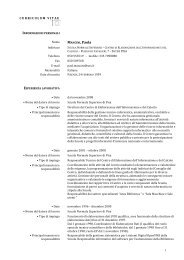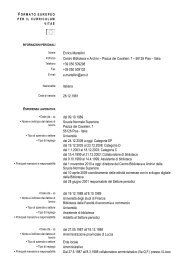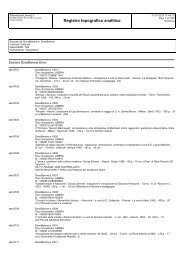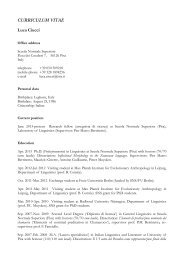Metrics of curves in shape optimization and analysis - Andrea Carlo ...
Metrics of curves in shape optimization and analysis - Andrea Carlo ...
Metrics of curves in shape optimization and analysis - Andrea Carlo ...
Create successful ePaper yourself
Turn your PDF publications into a flip-book with our unique Google optimized e-Paper software.
11 Mathematical properties <strong>of</strong> the Riemannianspace <strong>of</strong> <strong>curves</strong>In this section we study some mathematical properties, <strong>and</strong> add some f<strong>in</strong>alremarks, regard<strong>in</strong>g the Riemannian manifold <strong>of</strong> geometric <strong>curves</strong>, when this isendowed with the metrics that were presented previously.11.1 ChartsLet aga<strong>in</strong>M = M i,f = Imm f (S 1 , lR n )be the space <strong>of</strong> all smooth freely-immersed <strong>curves</strong>.We already remarked <strong>in</strong> Remark 4.4 that, if the topology on M is strongenough then the immersed <strong>curves</strong> are an open subset <strong>of</strong> all functions. Wemoreover represent both <strong>curves</strong> c ∈ M <strong>and</strong> deformations h ∈ T c M as functionsS 1 → lR n ; this is a special structure that is not usually present <strong>in</strong> abstractmanifolds: so we can easily def<strong>in</strong>e “charts” for M.Proposition 11.1 (Charts <strong>in</strong> M i,f ) Given a curve c, there is a neighborhoodU c <strong>of</strong> 0 ∈ T c M such that for h ∈ U c , the curve c + h is still immersed; then thismap h ↦→ c + h is the simplest natural c<strong>and</strong>idate to be a chart <strong>of</strong> Φ c : U c → M.Indeed, if we pick another curve ˜c ∈ M <strong>and</strong> the correspond<strong>in</strong>g U˜c such thatU˜c ∩ U c ≠ ∅, then the equality Φ c (h) = c + h = ˜c + ˜h = Φ˜c (˜h) can be solved for hto obta<strong>in</strong> h = (˜c − c) + ˜h.The ma<strong>in</strong> goal <strong>of</strong> this section is to study the manifoldB = B i,f := M/Diff(S 1 )<strong>of</strong> geometric <strong>curves</strong>. S<strong>in</strong>ce B is an abstract object, we will actually work withM <strong>in</strong> everyday calculus. To recomb<strong>in</strong>e the two needs, we will identify an uniquefamily <strong>of</strong> “small deformations” <strong>in</strong>side M, that has a specific mean<strong>in</strong>g <strong>in</strong> B. Acommon choice is to restrict the family <strong>of</strong> <strong>in</strong>f<strong>in</strong>itesimal motions h to those suchthat h(θ) is orthogonal to the curve, that is, to c ′ (θ).Proposition 11.2 (Charts <strong>in</strong> B i,f ) Let Π be the projection from M to thequotient B. Let [c] ∈ B: we pick a curve c such that Π(c) = [c]. We represent thetangent space T [c] B as the space <strong>of</strong> all k : S 1 → lR n such that k(s) is orthogonalto c ′ (s).We choose U [c] ⊂ T [c] B a neighborhood <strong>of</strong> 0; then the chart is def<strong>in</strong>ed byΨ [c] : U [c] → B , Ψ [c] (k) := Π(c(·) + k(·))that is, it moves c(u) <strong>in</strong> direction k(u).If U [c] is small enough, then this chart is a smooth diffeomorphism; <strong>and</strong>, ifwe pick another curve ˜c ∈ M <strong>and</strong> the correspond<strong>in</strong>g U [˜c] such that U [˜c] ∩ U [c] ≠ ∅,then the equalityΨ [c] (k) = Ψ [˜c] (˜k)89




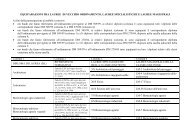
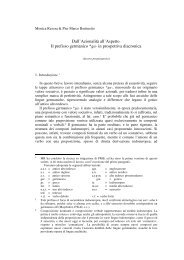
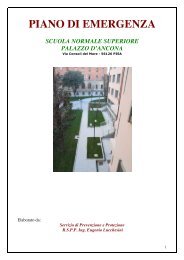
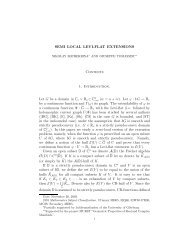
![4. Ghost [Å] vowels in French - Laboratorio di Linguistica](https://img.yumpu.com/49999334/1/184x260/4-ghost-a-vowels-in-french-laboratorio-di-linguistica.jpg?quality=85)



